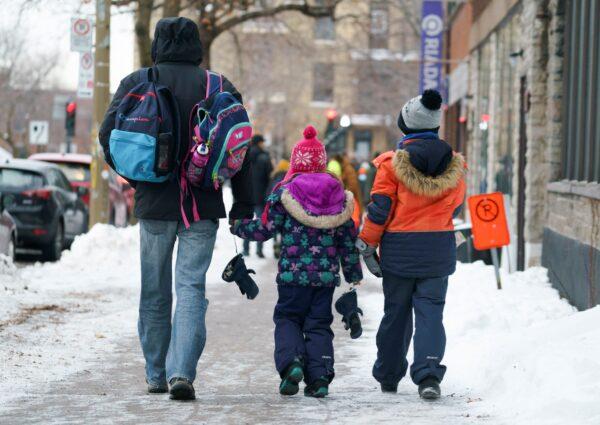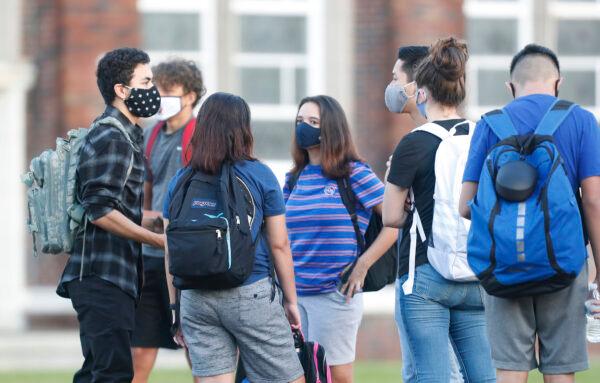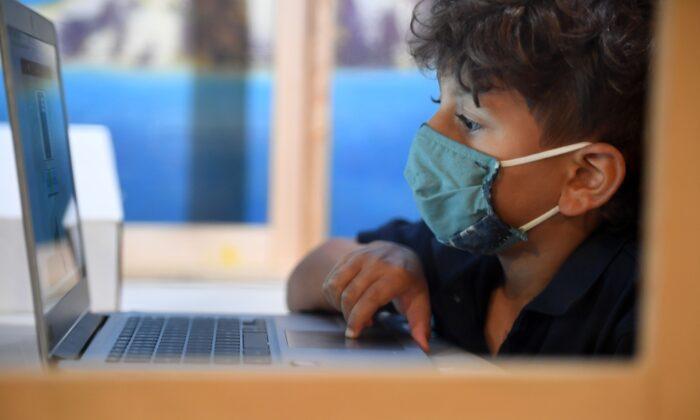A year into the pandemic, the disruption the crisis has wrought in children’s lives has become obvious: online classrooms, little to no group sports and hanging out with friends, extra mental pressure, among numerous other negative effects.
What is less known is the long-term impact this will have on children down the road.
“The effects of the pandemic on mental health in children are highly diverse, and we are unlikely to see the full effects for years to come,” says Dr. Jared Heathman, a Houston-based psychiatrist.
Laura Goldstein, a family therapist based in Washington, D.C., says the pandemic is especially hard on teenagers who are forced to stay away from peers at a time when they are developmentally geared toward independence and forming an identity separate from their families. She sees a trend where teens are either “rebelling harder” to gain independence or “regressing” into dependence on parents.
“Either one of these responses can have long-term impacts on long-term psychology,” she said.

The financial reality of the pandemic, with the drift in and out of lockdowns and the impact on jobs, also has an impact on the socioeconomic status of families, as more families report they are struggling financially. A national survey conducted by FP Canada in September found that 30 percent of respondents felt they will never fully recover financially from the effects of the pandemic.
“Compared to what we usually think as important family factors for children’s development, like happy marriages and well-educated parents, our results showed that parental anxiety about their financial situation is equivalent to the effect of a divorce,” Shelley Phipps, an economics professor at Dalhousie University, and Nancy Kong, a research fellow of health economics at Queensland University of Technology, wrote in a joint paper on COVID-19’s economic impact on children’s mental well-being.
Diverse Response
In 2020, young Canadians reached out to Kids Help Phone more than 4 million times—more than double that of 2019—signalling a growing cohort of youth struggling to cope amid the pandemic.According to Canada-wide data from Kids Help Phone, 43 percent of phone calls were related to mental and emotional health issues, while 38 percent of texts were related to anxiety or stress. Relationships, depression, and suicidal thoughts were also among the top issues that young Canadians ranging in age from 5 to 25 or older contacted the service about.
Heathman says children’s response to the pandemic is highly diverse—depending on factors like their support systems, home life, personality, and pre-existing mental health conditions.
Kids who struggle with social anxiety may find relief in at-home learning amid school closures, for example, while extroverted teens may find separation from their peers devastating, he says.

Family and relationship psychotherapist and author Fran Walfish, based in Beverly Hills, says that although her clients have had difficulty adjusting to pandemic-imposed changes, “the vast majority of children are adaptable and resilient.”
She says some have even expressed their appreciation for pandemic-induced changes such as the opportunity to spend more time with their parents, and a feeling of being united as a family against a common threat.
“Quarantine has inadvertently perpetuated a very positive requirement for healthy family functioning,” she said.
Screen Time
Besides reduced physical activity and the health risks associated with that, school closures are also resulting in increased screen time for children.Author John DeGarmo, who holds a doctorate in education, says the increase in children’s internet use as a result of staying home and learning remotely can present problems.
Increased screen time can expose children to outside dangers such as child exploitation and cyberbullying, as well as technology addiction, he says.
“This time in front of a computer screen can lead to psycho-social problems like internet addiction, lower self-esteem, and low interest in physical activities,” he said.
According to the research report “Raising Canada 2020,” released in September 2020 by non-profit Children First Canada, only 4.8 percent of children (ages 5 to 11) and 0.8 percent of youth (ages 12 to 17) were meeting 24-hour movement guidelines amid the pandemic. In addition, specialists have reported a rise in eating disorders among young adults in Canada, the United States, and other countries since the pandemic started.
Students have also been missing out on the health-promoting benefits of involvement in sports teams, extra-curricular activities, and milestone ceremonies, says Kendall Roach, a school counsellor and behavioral health expert for digital health company Babylon.
“Not only were children taken out of a safe environment where they could learn and thrive, older students were taken out of sports and end-of-the-year graduation traditions. For many students this caused anxiety and depression,” she said, noting an increase in students seeking her counselling services due to stress about missing out on life opportunities.

Roach also worries that as kids spend increased time alone and online, the lack of socialization could lead to a habit of working alone, which may hinder them later in life when they’re asked to be “team players” in the workplace and elsewhere.
What’s a Parent to Do?
Despite their concerns, the experts interviewed by The Epoch Times say there are many things parents can do to help ease the adverse impacts on kids brought about by the pandemic.Heathman says maintaining a family routine and social activities and encouraging hobbies can help kids keep a sense of normalcy and support their continuing development. Ensuring regular exercise and a healthy diet are also key, he notes, as is seeking professional advice if concerns arise about a child’s well-being.
Dana Hall, an Illinois-based counsellor who specializes in trauma, says parents should be vigilant about limiting kids’ exposure to news or online sources where they may get a flood of stories and images that are overwhelming, and watch for signs that a child is becoming distressed.
“If your child is expressing hopelessness, despair, anger, self-isolating, or acting out, do not wait to link them to a professional. These may be signs that they are experiencing psychological distress,” she said.
Roach says if past pandemics are any indication, some children will have higher resilience and adaptability after growing up in a pandemic era, while others will have increased anxiety and “doomsday” reactions to crisis situations. She says the most important thing parents can do is to model calm resiliency themselves.
“How you respond to the pandemic is how your child will learn to deal with difficult times,” she said. “They are watching how we react and learning daily.”






Friends Read Free